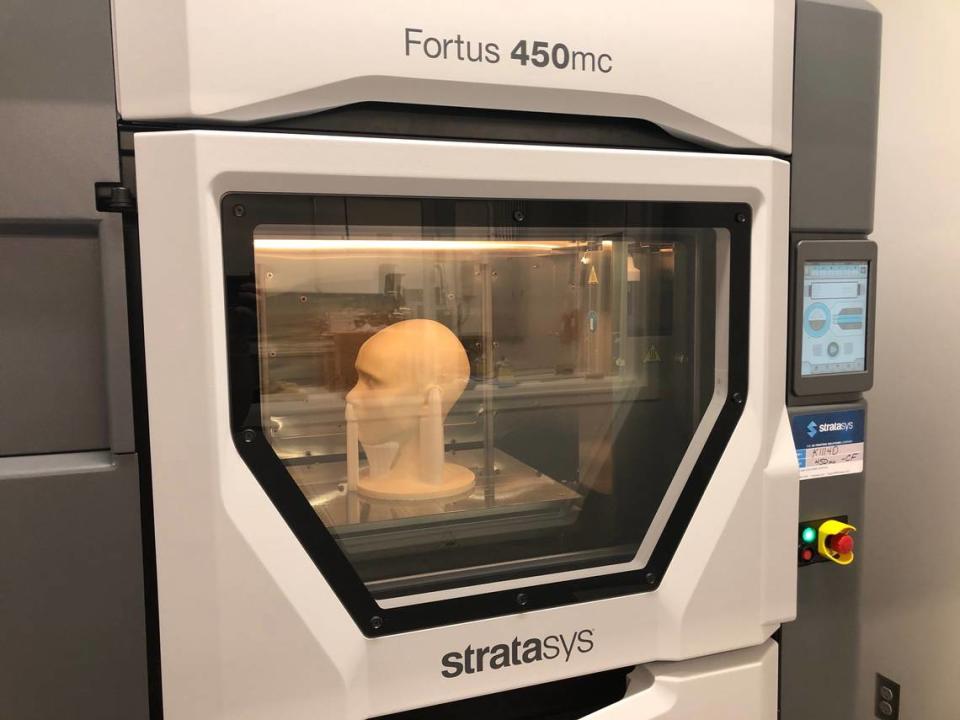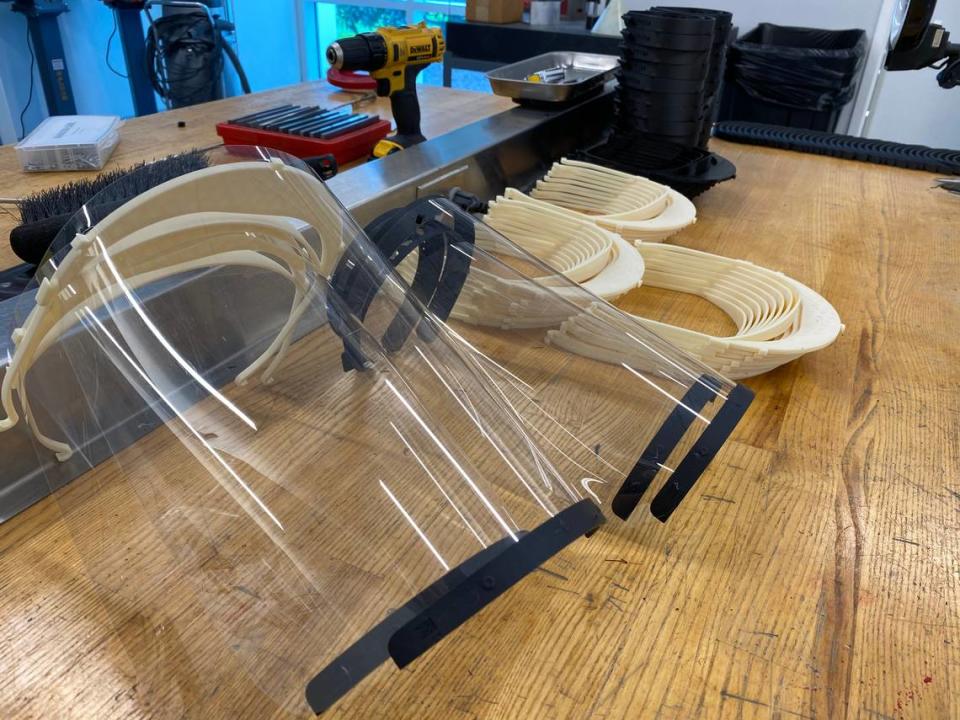NASCAR engineers work dawn until midnight to help North Carolina hospitals fight COVID-19
NASCAR’s Research and Development Center is typically consumed with tasks such as engine testing, chassis certification and post-race car inspections. But after the coronavirus pandemic forced the NASCAR season and non-essential public activity to a halt, the department pivoted to a new priority: 3D printing face shields for hospitals short on protective equipment.
From dawn to midnight, around 10 engineers shuffle into the Concord-based lab between regular video calls and their daily work. The volunteers are occasionally accompanied by their teenage children, who help cut plastic while they operate the five 3D printers that cost as much as a North Carolina home.
The group has assembled around 200 face shields since shifting its operations last week, according to the head of NASCAR’s aerodynamics team, Eric Jacuzzi. Most of that batch was delivered to Novant Health, which serves hospitals in North Carolina, South Carolina and Virginia.
“The biggest thing was just even getting shields to be available,” Jacuzzi said. “The rationing of equipment that’s happening out of necessity is greater than we thought, so we were kind of surprised at the need level.”
Jacuzzi said that since filling the order with Novant, other sites have made requests, and those have not always included face shields. For example, the team 3D printed a replica of a human head for medical professionals at Wake Forest to refine coronavirus protection techniques. Jacuzzi said they are now filling equipment orders for Cabarrus County and various pediatric centers.
“As the word is getting out, it’s kind of snowballing,” Jacuzzi said.

With the number of coronavirus cases rising daily and protective equipment growing scarce, creative solutions and volunteer efforts are increasingly welcomed by health professionals, and the NASCAR community has embraced the all-hands-on-deck mentality. In addition to NASCAR’s R&D branch, teams, manufacturers and individuals are contributing to COVID-19 response efforts.
The supplier of NASCAR’s chassis kits, Technique, for example, has shifted factory operations in Jackson, Mich., to manufacture 20,000 face shields a day. Speedways are being used to host testing centers, while teams, manufacturers and drivers contribute donations in either supplies or funding for hospitals seeking equipment.
“The motorsport industry is really good at making stuff, making it fast and having the right equipment,” Jacuzzi said. “So it’s kind of a unique blend of things that position us to help out.”

Jacuzzi said his team is producing 40 to 50 face shields per day and is trying to stay on top of incoming orders. The biggest issues his team faces is timing the deliveries of printer materials, as well as keeping the clear plastic in stock.
“There is definitely strain on the normal supply chain, I guess,” Jacuzzi said. “There are these specific items. It’s kind of like the grocery store phenomenon a month ago when everybody wanted paper products.”
But Jacuzzi said he and his team will continue to take orders and try to meet the industry’s needs as best they can, even if it means replicating another human head or another few months of monotonous button-pushing, plastic-cutting and assembly-line type work.
“Some of these machines are in the hundreds of thousands of dollars,” Jacuzzi said. “And they can do things that a hobby machine can’t.
“Anytime we can do something like that, I don’t think we’d shy away from it.”

